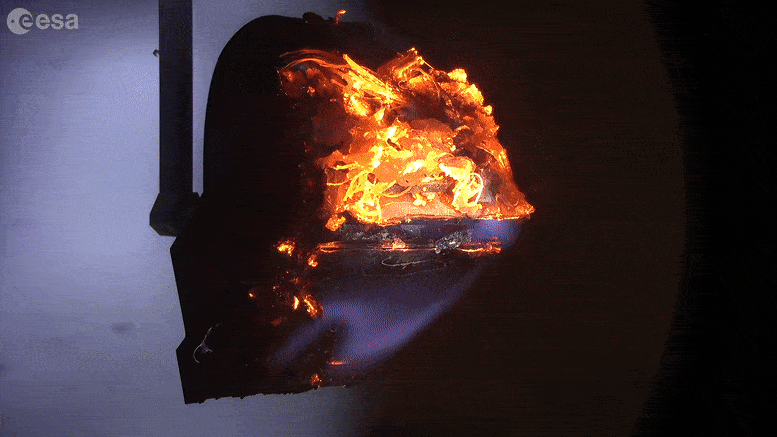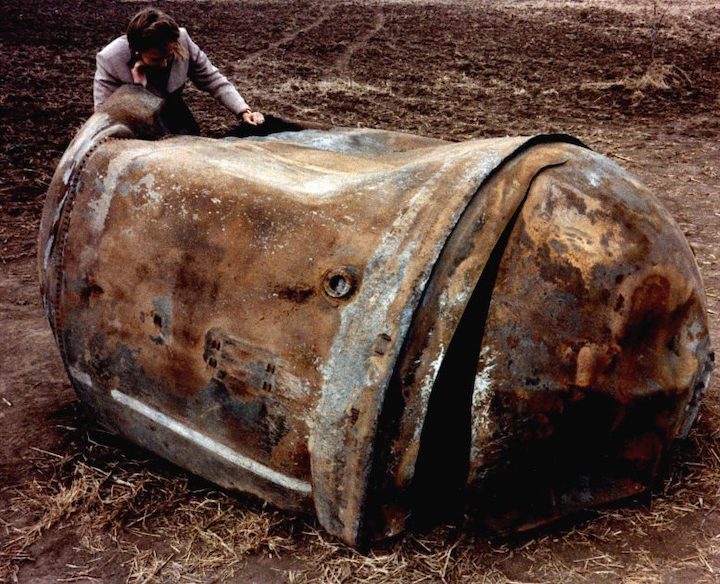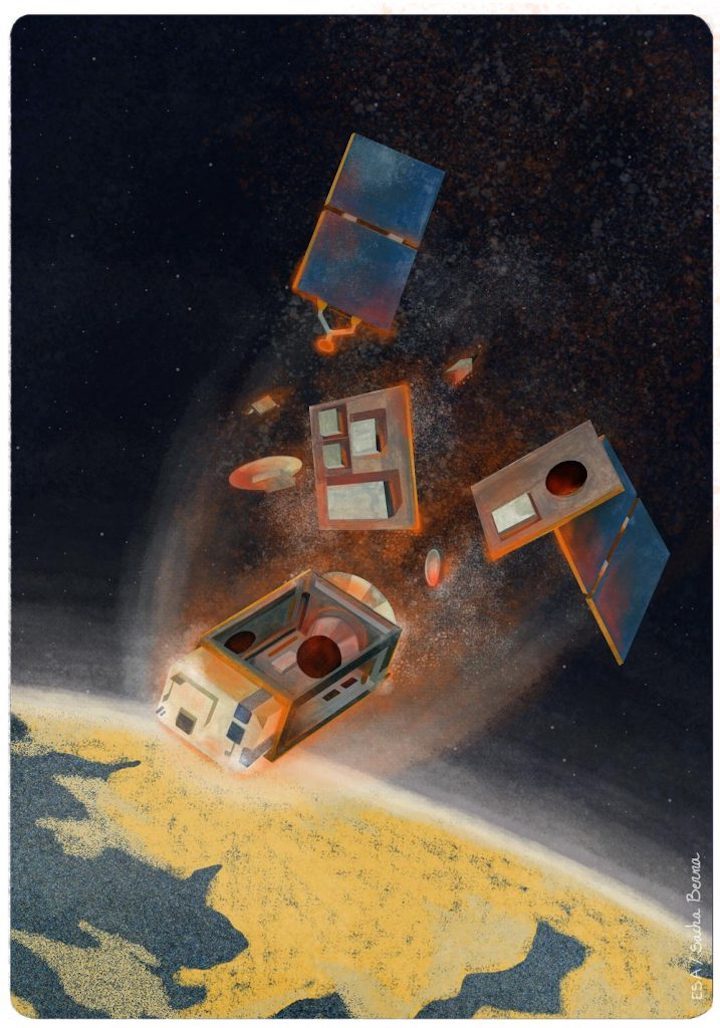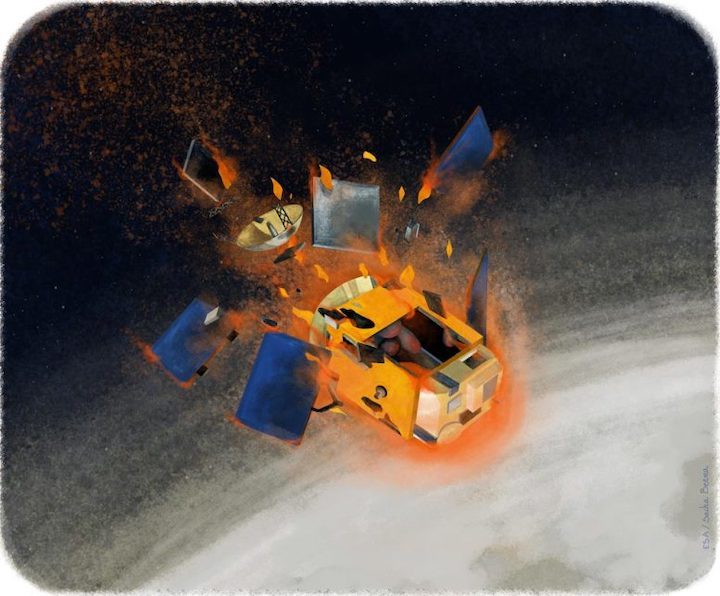
ESA’s Clean Space initiative performed simulated reentry testing inside a plasma wind tunnel at the DLR German Aerospace Center’s site in Cologne. Credit: ESA
It might be counter-intuitive, but designing satellites to better fall apart is one of the key strategies to combat space debris. Developed by ESA’s Clean Space initiative, the approach is called ‘Design for Demise’ and involves making sure that derelict satellites will break up and burn up fully as they reenter the atmosphere.
Reentering space hardware should burn up entirely in the course of plunging through the atmosphere to be safe. In practice, some pieces can make it all the way down to Earth – some of them big enough to do serious damage.
In 1997, for instance, Texans Steve and Verona Gutowski were woken by the impact of what looked like a “dead rhinoceros” just 50 m from their farmhouse. It turned out to be a 250 kg fuel tank from a rocket stage.

The main propellant tank of the second stage of a Delta 2 rocket landed near Georgetown, Texas, USA, on January 22, 1997. This tank of about 250 kg is primarily a stainless steel structure and survived reentry relatively intact. Credit: NASA
Modern space debris regulations demand that such incidents should not happen. Uncontrolled re-entries should have a less than 1 in 10,000 chance of injuring anyone on the ground.
As part of a larger effort called cleansat, ESA is developing technologies and techniques to ensure future low-orbiting satellites are designed according to the concept of ‘D4D’ – design for demise.
Some heavier satellite elements are more likely to survive the reentry process. These include magnetotorquers which use magnets to shift spacecraft orientation against Earth’s magnetic field, optical instruments, propellant, and pressure tanks, the drive mechanisms operating solar arrays and reaction wheels – spinning gyroscopes used to change a satellite’s pointing direction.

Satellite reentry. Credit: ESA/ Sacha Berna
One element of D4D research involves actually melting such bulky items within plasma wind tunnels capable of reproducing the fiery conditions involved. Another is to plan methods of ensuring an early breakup of reentering debris.
During reentry, peak heat fluxes and mechanical loads usually result in a satellite’s break-up at around 75 km up. Only after this altitude will most of the internal equipment exposed to the heat flux start ‘demising’ as well.

Breaking apart on reentry. Credit: ESA/ Sacha Berna
But engineering a higher break-up altitude would imply that the internal equipment would be exposed to the heat flux for a longer time, greatly enhancing its overall demisability. Possible ways to ensure this include more meltable joints holding satellite panels together or the use of ‘shape memory alloys’ which shift shape with temperature.
Clean Space also uses the DRAMA (Debris Risk Assessment and Mitigation Analysis) software to calculate the compliance of a given satellite design with space debris mitigation standards and to ensure that the latest research findings are accounted for, always aiming to reduce the risk of injury below that crucial 1 in 10,000 value.
Quelle: SCITECHDAILY

